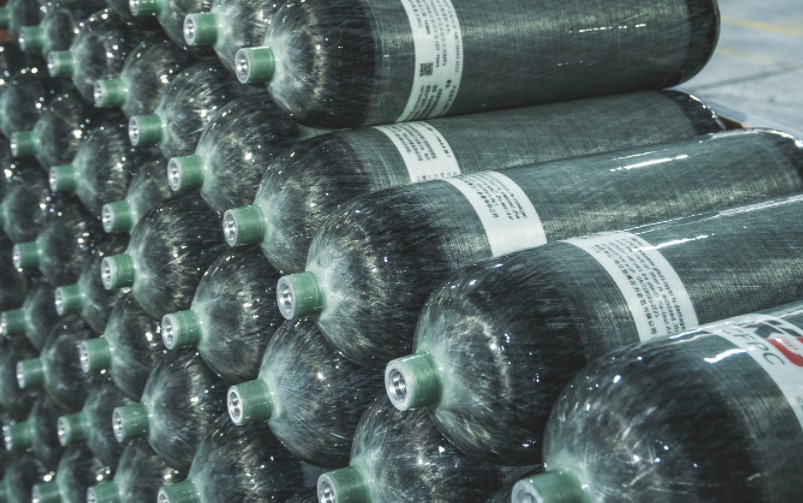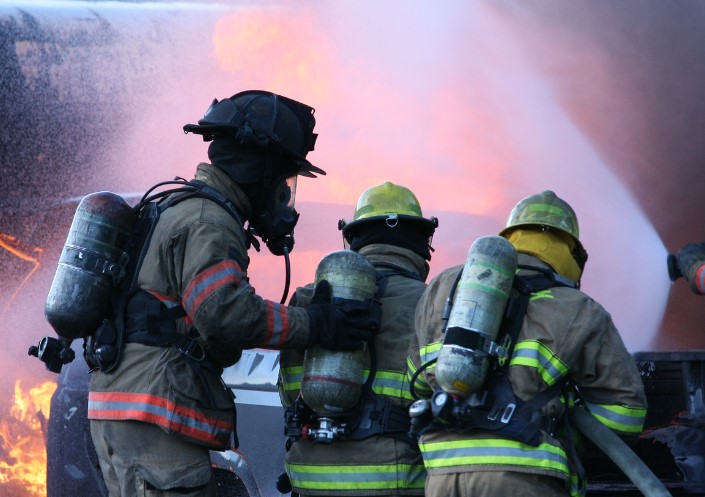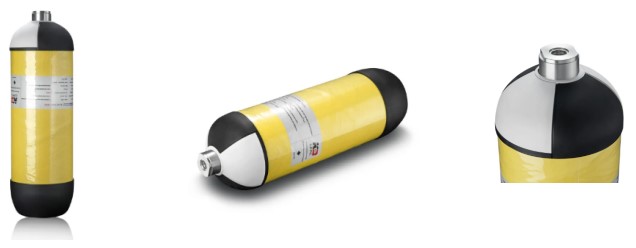Carbon fiber air tanks have transformed safety equipment, particularly for applications where both high-performance and lightweight design are crucial. In rescue, firefighting, industrial, and medical fields, these tanks have become an essential tool, replacing traditional steel or aluminum tanks with a stronger, more efficient alternative. With advances in carbon fiber technology, air tanks are now lighter, more durable, and able to store more compressed air, making them a reliable choice for life safety applications.
In this article, we will explore the advantages of carbon fiber air tanks, how they work, and why they are increasingly becoming the future of life safety equipment.
Understanding Carbon Fiber Air Tanks
Carbon fiber air tanks are made using a composite material that consists of a polymer (usually a resin) reinforced with carbon fibers. This construction gives them an impressive strength-to-weight ratio, meaning they can handle high pressures while remaining much lighter than traditional tanks. They often feature an inner liner made of metal or high-grade plastic to maintain shape and integrity, wrapped in layers of carbon fiber that are bonded with resin.
Because of this layered construction, carbon fiber air tanks can withstand pressures upwards of 3000 psi (pounds per square inch), with some models capable of 4500 psi or more. This high-pressure capability means that more air can be stored in a smaller, lighter tank, which has significant implications for users in life safety fields.
Why Carbon Fiber Air Tanks Are Essential in Life Safety
- Lightweight Construction Enhances MobilityOne of the main advantages of carbon fiber air tanks is their lightweight design. For first responders, firefighters, and industrial workers, reduced weight can significantly improve mobility, especially in demanding situations. Traditional steel tanks can weigh twice as much as carbon fiber tanks, adding to the burden of the user and limiting their endurance and maneuverability. The lightweight nature of carbon fiber makes it easier for personnel to carry essential life-saving equipment without compromising speed or efficiency.
- Higher Air Capacity in a Compact DesignBecause carbon fiber tanks can handle much higher pressures, they store a larger volume of air compared to similarly sized steel or aluminum tanks. This increased capacity is vital in life safety applications, as it extends the amount of time that users can operate in hazardous or oxygen-deficient environments. For firefighters, this means they can spend more time in burning buildings; for rescue divers, they can stay submerged longer; and for industrial workers, they have a longer window to complete tasks in confined or toxic spaces.
- Greater Durability and ResilienceCarbon fiber air tanks are highly resilient to impact and extreme environmental conditions. The carbon fiber layers provide superior strength, and the composite nature of the material resists cracking, corrosion, and other types of wear and tear that metal tanks might suffer over time. This durability is particularly valuable in life safety applications, where equipment must be reliable under harsh conditions. Carbon fiber tanks can handle extreme temperatures, rough handling, and the pressures of high-demand use without compromising safety.
- Enhanced Comfort and ErgonomicsIn addition to reducing weight, carbon fiber air tanks are often designed with ergonomic considerations in mind. Lighter tanks with smaller profiles allow for better balance and less strain on the user, making them more comfortable to wear for extended periods. This is particularly important for firefighters, divers, and industrial workers who may have to wear the tanks for hours at a time. The more comfortable the equipment, the better the user’s performance and the lower the risk of fatigue-related errors.
Key Applications of Carbon Fiber Air Tanks in Life Safety
- FirefightingFirefighters often need to carry self-contained breathing apparatus (SCBA) into burning buildings or smoke-filled environments. Carbon fiber air tanks are an integral part of SCBA systems, providing a portable supply of breathable air in life-threatening situations. With their high capacity and lightweight construction, these tanks allow firefighters to move quickly and safely, ensuring they can perform rescues or control fires without excessive fatigue. Additionally, the durability of carbon fiber means the tanks are less likely to fail in high-temperature environments.
- Search and RescueSearch and rescue missions in confined spaces, mountainous areas, or hazardous environments can be physically demanding. Carbon fiber air tanks offer the necessary air supply in a form that’s easy to carry, allowing search and rescue teams to reach trapped individuals without the added weight of traditional steel tanks. This portability is essential when teams must navigate rugged or cramped spaces where every pound matters.
- Industrial SafetyIndustrial workers in chemical plants, waste treatment facilities, and other hazardous sites may encounter dangerous gases or oxygen-deficient environments. Carbon fiber air tanks provide the breathable air supply needed in these settings, allowing workers to safely perform maintenance, inspections, and other tasks. The tanks’ resistance to chemicals and corrosion is an added benefit, as it increases the longevity and reliability of the equipment in these challenging settings.
- Diving and Underwater RescueFor underwater search and rescue teams or divers working in confined water environments, carbon fiber air tanks allow for extended underwater operations without the bulk of traditional tanks. This is essential for maneuverability and ease of use underwater, where heavy equipment can impede movement. Additionally, the high-pressure capabilities of carbon fiber tanks mean that divers can carry more air, extending their time underwater and improving the chances of successful rescues.
The Future of Carbon Fiber in Life Safety Equipment
As advancements in material science continue, carbon fiber composite technology is likely to become even more efficient and versatile. Research is already underway to make carbon fiber tanks with even higher pressure capacities and improved safety features, such as better resistance to extreme temperatures and added sensors to monitor pressure and air levels. These innovations will allow first responders, industrial workers, and rescue teams to perform their duties more effectively and with an added layer of safety.
Moreover, the cost of carbon fiber technology is expected to decrease as it becomes more widespread, making these high-quality, life-saving tanks accessible to a broader range of industries and applications.
Conclusion: A Game Changer for Life Safety Equipment
Carbon fiber air tanks are revolutionizing life safety equipment by providing lightweight, high-capacity, and durable air storage solutions for some of the most demanding applications. Their impact is evident across multiple industries, from firefighting to industrial safety, where lightweight, reliable equipment is essential for performance and safety.
As technology advances, carbon fiber will likely play an increasingly important role in enhancing the safety and efficiency of life-saving equipment. For now, carbon fiber air tanks
represent a significant step forward, providing first responders and workers with the tools they need to safely and effectively do their jobs in high-risk environments.
Post time: Oct-29-2024



